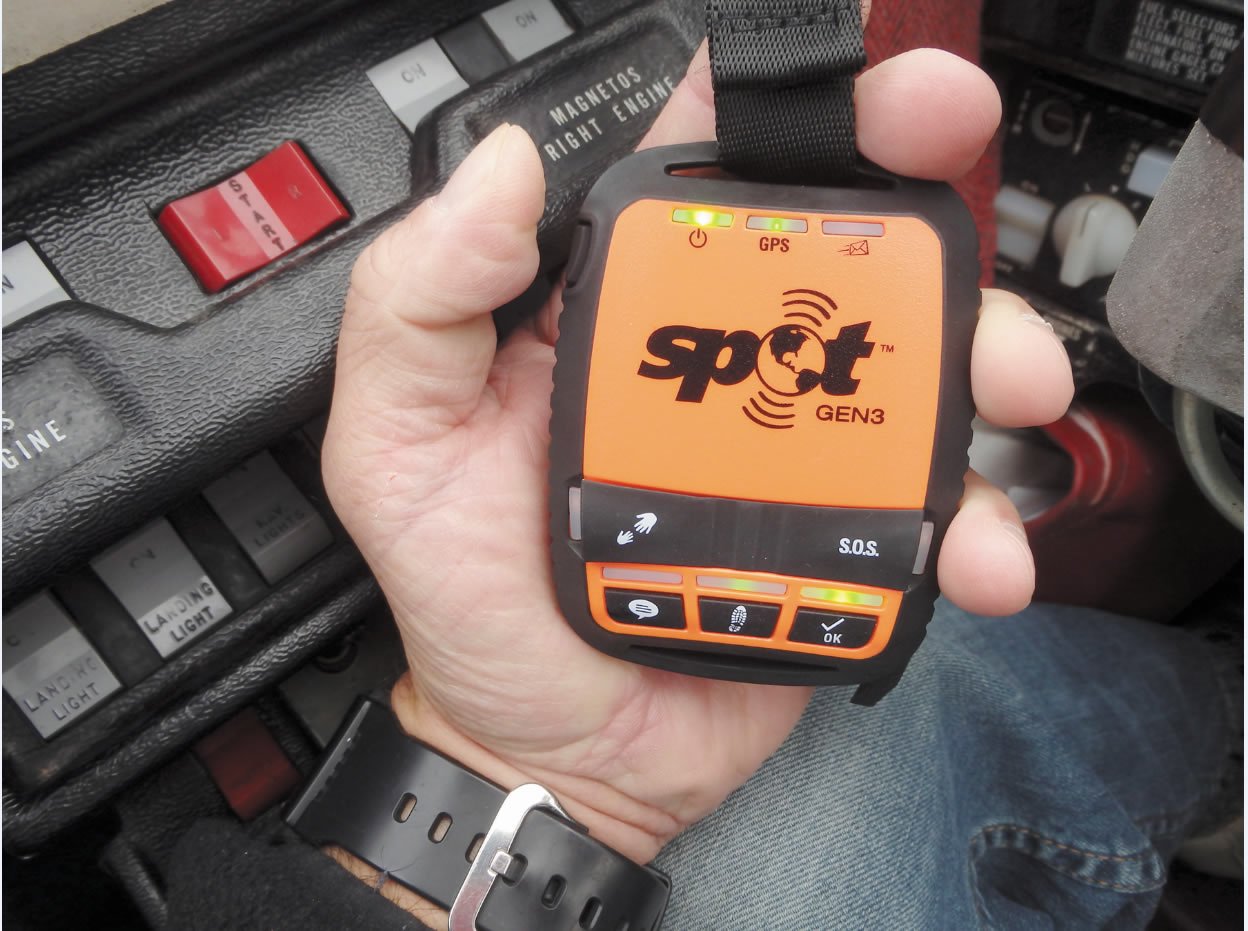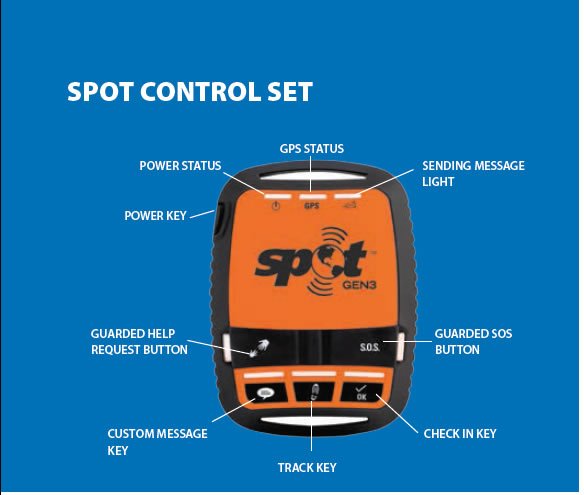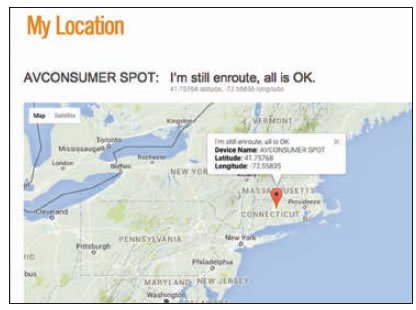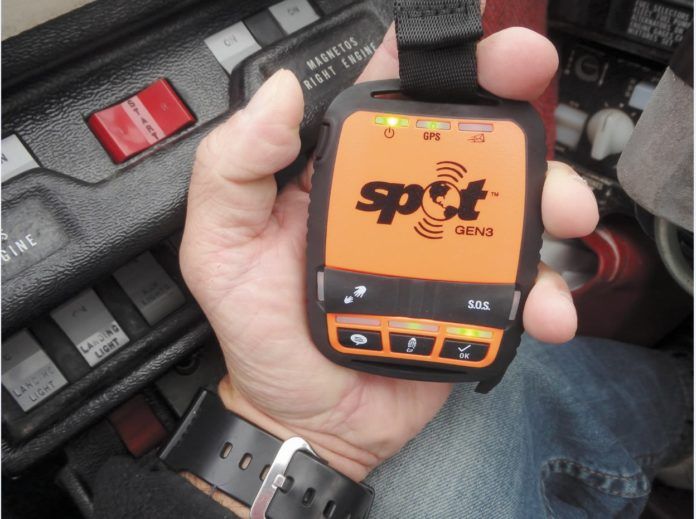
We’ve been on enough flying, boating, hiking and other adventure outings that put us out of cellular reach of family members accustomed to knowing our every move. That’s a communication void Spot is trying to fill with its latest GEN3 global satellite GPS messenger and tracking device.
The device can serve double duty for sending predetermined text messages to the recipients of your choice, while also offering real-time Internet tracking, plus SOS functionality.
Compared to satellite phones which require price airtime plans, the Spot has some limitations (it has no voice capability or real-time text editing), but its low price and flat-rate service fee makes it a worthy addition to a survival pack for traveling outside of cellular and Wi-Fi coverage.
Form Factor
At 3.43 by 2.56 by 1.0 inches and weighing 4 ounces with four AAA batteries installed, Spot’s GEN3 is just the right size for stashing in a jacket pocket or hanging from a structure using the included carabiner and tether strap. The contoured device is equipped with a USB interface for 5-volt line power input and for data download and upload, but battery endurance is much improved over earlier models.
Like earlier Spot trackers, the GEN3 determines its location with an internal GPS receiver and communicates over the Globalstar phone and data satellite constellation. Ground-based antennas route the data through a dedicated network, providing worldwide coverage.
Spot makes it clear that the device needs a clear view of the sky for optimum GPS reception, with the face of the unit pointed up. It worked we’ll when placed on the glareshield of a Piper, but not so we’ll when shielded by the sidewall and instrument panel (there is no external antenna.) A GPS mode annunciator blinks green if the receiver sees the satellites and blinks red if it doesn’t. We took the device on a motorcycle trip deep in the mountains and the receiver performed we’ll even when other GPS receivers didn’t. The GEN3 has a maximum operating altitude of 21,320 feet.
The GEN3 has improved buttons with a positive feel, lending to a rugged overall control set. A single power button is located on the upper side of the case, while a power status annunciator is at the top of the device’s face. Two keys which you don’t want to inadvertently hit—SOS and HELP/ASSIST—are guarded with rubber pull-away covers on the center of the face. More on those in a minute.

Motion Activation
Since the device has full-time tracking capability, an internal vibration sensor commands the device to transmit GPS location whenever it is moving. When the device is stationary for more than five minutes, it enters a suspended track mode, but will automatically send one more track waypoint from the resting location. Spot says this helps conserve battery life. It doesn’t state exact specifications for battery endurance, since this depends on temperature, the amount of messages you transmit and whether the GPS receiver struggles to lock on. You can help conserve power by setting the frequency of the device’s transmission.
For example, the preprogrammed tracking modes are customizable for either 2.5-, 5-, 10-, 30- or 60-minute intervals when you subscribe to Spot’s Unlimited or Extreme tracking service packages.
Others can track your progress in near real-time using the Spot Shared Pages function, which uses Google Maps and a virtual breadcrumb trail of your movement. To initiate the tracking, simply press and hold the Track button and the device sends current GPS position as a waypoint as determined by the frequency of preset track updates.
Pressing the SOS button sends an alert directly to the GEOS International Emergency Response Coordination Center (IERCC), which notifies emergency responders (Coast Guard, local police and other agencies) of the SOS situation. This is based on GPS location and the personal information you entered on findmespot.com during account and device activation. The Sending Message annunciator confirms that the SOS was sent. You also have the option of cancelling an SOS by holding the SOS button until it turns red.
After logging into your account, you can edit custom messages, help and assist messages and check-in text message profiles which can be sent to email addresses and phone numbers of your choice. Additionally, you can link the transmitted data for posting to a Facebook and Twitter account.
The GEN3 tracking mode can interface with Lockheed Martin Flight Services’ Surveillance-Enhanced Search and Rescue to trigger alerts when a VFR flight is overdue at the destination by 30 minutes. Lockheed also uses the tracking to issue reminders to close a VFR flight plan.

Service Packages
The Spot won’t work without a valid subscription and activation. The entry-level $149.99 per year ($14.99 per month) basic service includes unlimited predefined custom, check in, tracking, SOS and help request messages. With the base package, the tracking function transmits the GPS location every 10 minutes continuously for 24 hours. An additional $49.99 per year extends the transmission beyond 24 hours and allows you to preset tracking intervals. For pilots, Spot recommends the Extreme package, which tightens the tracking interval to 2.5 minutes.
Since most search and rescue efforts will conclude with you paying the tab, the $17.95-per year GEOS search and rescue member benefit add-on covers up to $100,000 in search and rescue expenses. This also covers expenses accrued by private rescue contractors. For $30 per year, the Help/Spot Assist function sends GPS position for roadside and maritime assistance.
The GEN3 comes with batteries, yet another USB cable for the drawer, plus a strap and carabiner. Contact www.findmespot.com.


